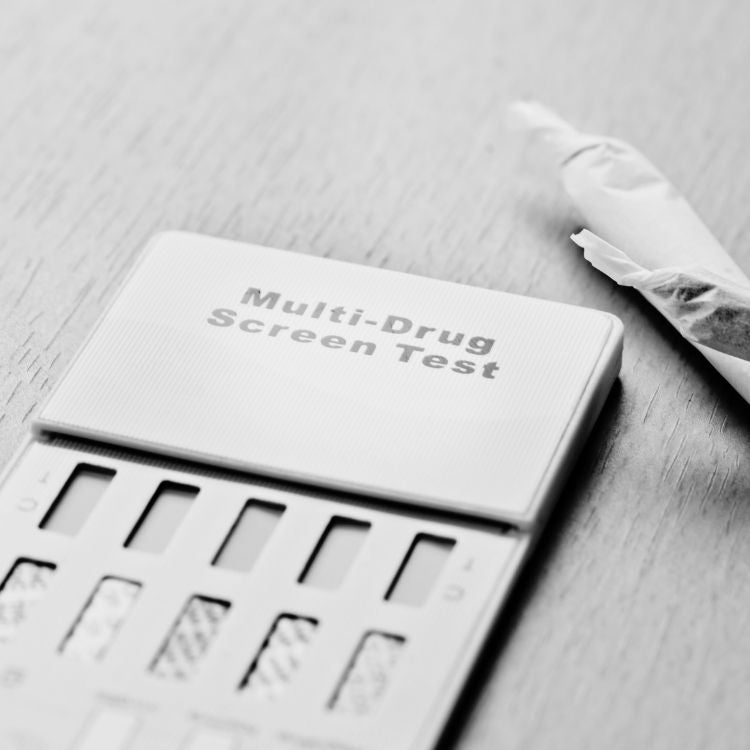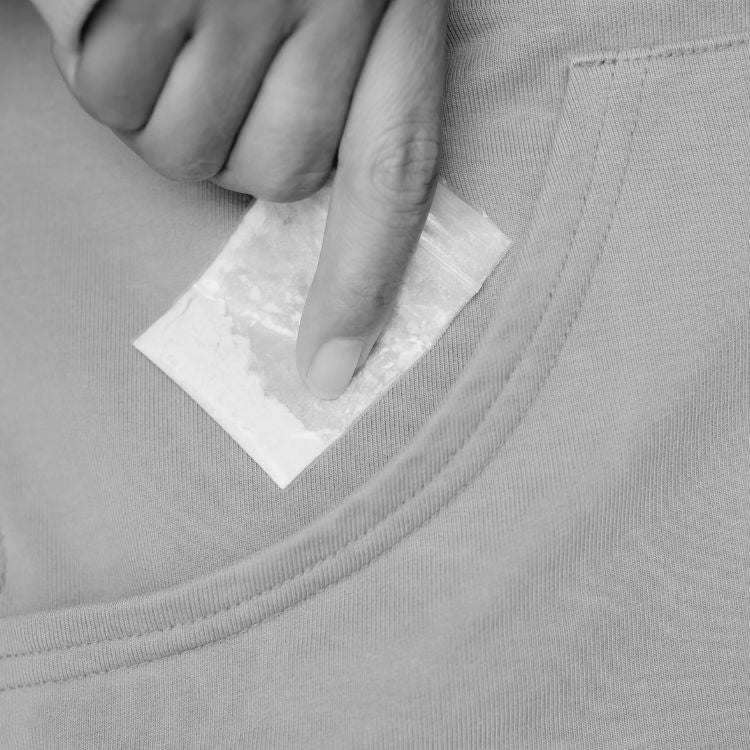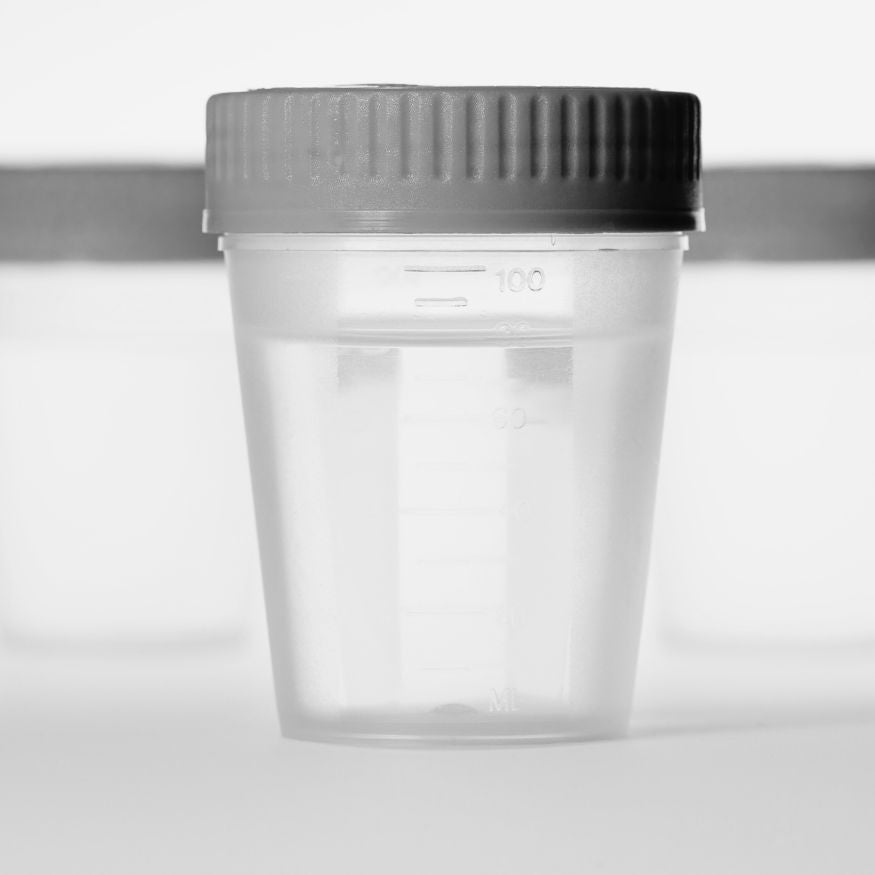Like any other substance, when you ingest drugs (whether they’re illicit or prescription) they aren’t metabolised right away – your body takes a while to break them down and excrete them.
So, in the time period between drug-taking activity and full elimination from the body, drugs are detectable via drug screening tests like urine and saliva tests.
Each unique drug has its own detection window that can be used as an indicator of whether the substance is still present in your system, and should be used to guide your decisions and ensure the safety of both yourself and others when taking drugs.
Keep reading as we explore how drug detection windows work, the various drug detection windows for popular drugs in Australia, and how to use Drug Alert test kits to safely determine if drugs are still traceable in your system.
What is a drug detection window?
A drug detection window is the amount of time that drugs are detectable in the human body, analysed through common testing methods like urine and saliva tests.
Simply put, it’s how long substances will show up on a drug test after you’ve taken them.
A drug’s effects vs its detectable window
There’s a misconception that once you no longer feel the effects of a drug, it’s out of your system – but that couldn’t be further from the truth. Many, if not most, drugs linger in the body for days or even weeks after their effects have worn off.
Why are drug detection windows important?
Understanding drug detection windows is critical knowledge for people who are at risk of being drug tested in any capacity. At work, the consequences of failing a random drug test can be dire, both on the people you interact with and on yourself. Knowing how drug detection windows work can empower safer decision-making and minimise harm to others.
What are drug detection cut-off levels?
All drug tests have a cut-off level – a predetermined threshold that if met or exceeded, denotes a positive result, but if not met, indicates a negative result.
This means that even if a drug is detectable in someone’s system, if it does not meet the cut-off level, the result will be deemed negative.
Cut-off levels are widely used for two key reasons:
Common detection windows: How long do drugs stay in your system?
Drug test detection periods will vary based on the substance in question, as each drug has a unique half-life (the amount of time it takes for the concentration of a drug to reduce by 50% in your system).
They can also vary based on the type of test you administer – for instance, urine testing detection windows are often shorter than saliva drug test timeframes.
While all four major types of drug testing – hair, blood, urine, and saliva – are used in Australia, the two most common types are urine testing and saliva testing. Let’s break down drug detection by type for each drug testing method.
Saliva testing detection windows
Saliva samples tend to have shorter detection windows compared to hair, blood, and urine tests. This is because of a number of factors, including the way drugs are metabolised and excreted throughout the body (drug metabolites clear from saliva faster) and the volume of the sample required for saliva vs urine.
The below table provides a breakdown of how long common drugs will show up on a saliva drug test.
Note that these are only suggested windows – everyone processes drugs differently. We’ll cover some of the factors that can impact your metabolism of drugs later.
|
Drug |
Saliva test detection window |
|
Marijuana (THC) |
Up to 3 days |
|
Cocaine (COC) |
Up to 3 days |
|
Opiates (OPI) |
Up to 3 days |
|
Amphetamines (AMP) |
Up to 2 days |
|
Methamphetamines (MET) |
Up to 2 days |
|
Methylenedioxymethamphetamine (MDMA) |
Up to 2 days |
|
Tricyclic (TCA) |
Up to 3 days |
|
Barbiturates (BAR) |
Up to 3 days |
|
Benzodiazepines (BZO) |
Up to 5 days |
|
Methadone (MTD) |
Up to 10 days |
Urine testing detection windows
Urine drug test detection times tend to be longer than saliva, but it depends on the drug – for some substances, such as codeine, it may actually take a longer period of time for a drug to be untraceable in your saliva.
Here’s your guide to urine test detection windows for common drugs in Australia.
|
Drug |
Urine test detection window |
|---|---|
|
Marijuana (THC) |
Up to 30 days |
|
Cocaine (COC) |
Up to 3 days |
|
Opiates (OPI) |
Up to 5 days |
|
Amphetamines (AMP) |
Up to 4 days |
|
Methamphetamines (MET) |
Up to 5 days |
|
Methylenedioxymethamphetamine (MDMA) |
Up to 3 days |
|
Tricyclic (TCA) |
Up to 5 days |
|
Barbiturates (BAR) |
Up to 7 days |
|
Benzodiazepines (BZO) |
Up to 7 days |
|
Methadone (MTD) |
Up to 12 days |
What factors can influence drug detection windows?
While drug detection windows are critical to be aware of, they’re not 100% accurate – there are a few external factors that can affect them and impact exactly how long a drug sticks around in your system:
Why self-administer a drug screening at home?
The only way to ensure you are able to work and function safely around others after taking drugs is to administer a drug test. To minimise potential risks to yourself and others after taking drugs, the best course of action is to self-administer a drug test. By taking a preventative approach, you can minimise potential harm to yourself and others.
Administering saliva drug testing
Taking and testing saliva samples with the Drug Alert Street & Prescription Drugs Saliva Test Kit is simple and convenient. Follow these steps:
- Open the kit and remove the test (which also serves as the collection device) from the sealed pouch.
- Remove the cap from the provided device.
- Ensuring you haven’t had anything in your mouth for at least 10 minutes, swab the inside of your mouth thoroughly along the gums with the absorbent side 10-15 times.
- Once the gums have been swabbed, place the swab under your tongue for 60 seconds.
- After 3 minutes, read the test.
- If all lines show, this indicates a negative result. If only one line shows, reread the test after 10 minutes. If the test continues to show only one line in the control section, this indicates a positive result.
Administering urine drug testing
Collecting urine samples might be slightly less convenient than saliva, but urine test kits can generally detect drug activity in the body for longer, so they may be a more accurate predictor of your safety depending on the circumstances.
To administer a urine drug test like the Drug Alert Street & Prescription Drugs Urine Test, follow these steps:
- Find a bathroom to conduct the test.
- Urinate into a clean, dry container at any time of day.
- Allow the test cassette, urine specimen, and/or controls to equilibrate to room temperature prior to testing.
- Remove the test cassette and place on a clean and level surface.
- Remove the cap from the end of the test card provided.
- With arrows pointing toward the urine specimen, immerse the strips of the test card vertically for at least 10-15 seconds.
- Place the cassette on a non-absorbent flat surface, start the timer and wait for the red line(s) to appear. Test results should be read after 5 minutes.
- If the test shows two lines, the test is negative. If it shows one line in the control region (C) and no line in the test region (T), the result is positive.
If you’re at risk of a potentially positive drug test, knowing your detection windows is paramount to ensuring the safety of yourself and others. By understanding how long drugs stay in the system after ingestion, and how to test yourself effectively at home to get an indication of your levels, you can greatly mitigate health, safety, work, legal, and financial implications.




